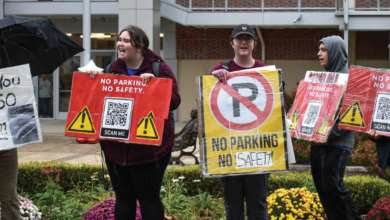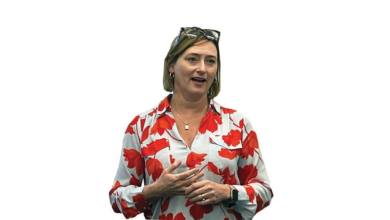Hurricane Ian fuels ongoing climate conversation
By Kaitlyn McCormick
Recent spats of extreme weather, notably Hurricane Ian which caused catastrophic damage in Florida this September, have sparked an increasing concern in the conversation surrounding climate change.
Ian, which made landfall near southwestern Florida on Sept. 28, was a Category 4 storm that originally tormented the Caribbean before striking Florida and then making landfall again near Georgetown, South Carolina, according to the National Environmental Satellite Data and Information Service.
Environmental science professor Daniel Druckenbrod explained in an interview with The Rider News that while climate change shouldn’t necessarily be regarded as the sole causation for extreme weather, a correlation is often worth studying.
“Generally [with] severe or extreme weather events, we can say that climate change often makes them more likely to have happened … and the way scientists can have some confidence about those sorts of statements is often retrospectively,” Druckenbrod said.
One of the most direct links to climate change, Druckenbrod explained, was how an increase in atmospheric heat impacts weather. “That greater warmth leads to more energy to create storms in general,” he said.
Druckenbrod also said that the increase in heat energy compounded with a correlated increase in water vapor in the atmosphere are ingredients for “horrid hurricane formation.”
Now add sea level rise, which Druckenbrod says has risen about half a foot since 1900 and is expected to increase, that not only impacts hurricane formation, but the related storm surges as well.
“We tend to think of risks from storms like Hurricane Ian as high winds … but then it’s high water and drowning deaths [that] are a great concern as well,” Druckenbrod explained.
Even more notably, and arguably surprising, Druckenbrod mentioned that according to scientific evidence, the number and frequency of hurricanes aren’t changing over the years, rather the intensity of them is.
“We are seeing that there are more intense hurricanes … the number of large hurricanes is increasing, the number of small hurricanes are decreasing,” Druckenrod said. “There’s some evidence,” though he mentioned that it’s not as clear cut, “that maybe hurricanes are intensifying more rapidly, and maybe moving more slowly.”
The aftermath of Ian in Florida has been catastrophic, with photos and videos reporting massive destruction and entire losses of property, sparking an outpouring of support from across the country.
Professor Cynthia Newman has connections in Florida through friends in Fort Myers where the storm was particularly strong, as well as her mother, who lives in Bonita Springs, which is in the surrounding area.
Newman said that while her mom’s property was fine, extreme events like these often have the potential to bring out the better parts of people as they come together to support each other.
“There’s always [that] goodness in humanity,” Newman said.
On Sept. 29, Rider’s President Gregory Dell’Omo sent out a message of solidarity to the university community.
“A number of members of our community, as well as their families and friends, are from the storm-impacted areas. Student Affairs is reaching out to students who live in the areas impacted by Hurricane Ian to provide support and resources,” the statement read in part. Links to Rider’s counseling services and the Dean of Students office were also included in the email.
Associate Dean of Students Christine Melhourn said that while there was no way of knowing how many students had family or friends impacted by the storm, her office reached out to 39 graduate and undergraduate students from Florida to offer any needed support.
According to Druckenbrod, majors in the sciences are only going to rise in importance as “we grapple with climate change in the years to come.”


